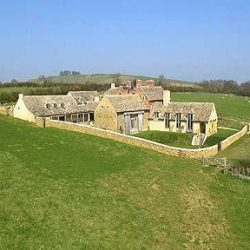On a £2m property purchase, you could save £73,750 by qualifying for a lower rate of stamp duty. Why? Because properties that are accepted by HMRC as being of “mixed use” qualify for a lower rate of stamp duty than residential properties.
Buying a £2m residential property under the new stamp duty rules would cost you up to the top rate of stamp duty at 12%. This makes a total of £153,750. However, buying a £2m property that is part of a working farm, you will pay stamp duty under the regime that Gordon Brown introduced in 2000 (4% levied on properties sold for more than £500,000), which would land you with a lower bill of £80,000.
Rupert Sweeting, head of Knight Frank estate agency, noted a recent case where the buyer of a £3.5m estate near Towcester, Northamptonshire, saved £87,500 in stamp duty because 28 of the 30 acres had been let to a local farmer for raising cattle and sheep.
So what exactly constitutes a farm? With a working farm, there is little doubt about it. But a Georgian mansion with a few sheep in the surrounds might not classify you as a farmer. And would you claim to be one, given the political focus on tax avoidance?
Mark McAndrew, head of estates and farms at Strutt and Parker estate agency says “There are sales of country houses going through as mixed use but there is no clear definition of what this constitutes”. That is decided by HMRC on a case-by-case basis.
It does not have to be agricultural either. Your garage could be occupied by an upholsterer and therefore regarded as mixed use. In this case you would have to be careful as, if you are claiming your garage as business premises, it may then be liable for business rates, which are often considerably higher than council tax and also payable at the full rate when the property has been empty for more than three months. So you might find yourself desperately searching for another business to rent your garage if your upholsterer moves on.
Woodland and orchard land would also be considered mixed use but the taxman may not be convinced that you deserve a lower rate of stamp duty because you have a few fruit trees in your garden, even if you sell the produce at the roadside. HMRC do not publish an official definition of ‘mixed use’ so you would have to argue it out with the taxman.
To complicate matters, the burden of proof is on the buyer, not the seller. But, if a seller wants to make their property more saleable, they should have documentation in place to assist the buyer such as grant schemes and tenancy agreements, proof of agricultural subsidies, and receipts for works.
You may not be shocked to learn that the price of agricultural land has been rising sharply – in England,15% last year alone. But with the current furore over tax avoidance, no one should count on the existing reliefs lasting for much longer.
For further information, please see the original article in The Sunday Times 01/03/2015.
Clark, Ross (2015). Golden Fleece. The Sunday Times. Pg 10.
Photo property www.telegraph.co.uk
